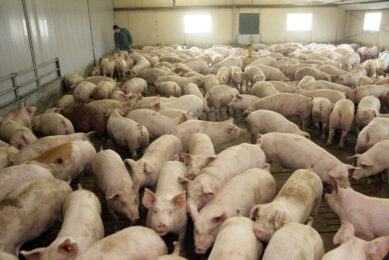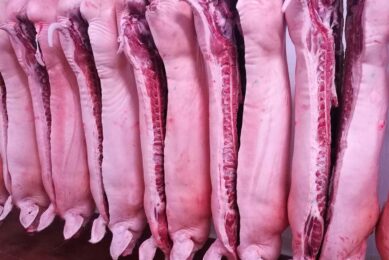RESEARCH: Risk factors for Salmonella-infections on pig farms

In light of recent changes to the German pig industry, German researchers set up a study to identify and examine the key contributing risk factors for farms in Lower Saxony. A survey conducted by the team showed that control of Salmonella on farms is highly individualistic and therefore extremely complex.
Salmonellosis is one of the major zoonotic, food-borne diseases, among others, caused by pig derived food products. As infected pigs are one of the main sources of the introduction of the bacterium into the food chain, scientific research in the last years has focussed on identifying risk factors for infection as well as developing mitigation strategies on this level of production.
In order to update the knowledge of the German situation by incorporating recent changes in the German pig industry, a case–control study was set up to identify the key contributing risk factors for farms located in the western part of Lower Saxony, the region with the highest pig density in Germany.
Based on an extensive and systematic literature search, a comprehensive questionnaire with 302 questions concerning such topics as personnel hygiene, animal management, biosecurity, feeding management as well as cleaning and disinfection routines was utilized in a face-to-face interview on 104 case and 67 control farms.
Within a stepwise forward selection process the preliminary identified factors were grouped contextually, associations between variables were calculated and multivariable logistic regression models were conducted. Identified risk factors were: the moving of individual animals during the fattening period (OR 5.3, CI 95% 1.35–20.35), not having a separate transporter for different age groups (OR 11.4, CI 95% 1.94–66.18) and pigs having contact to other animals (OR 4.3, CI 95% 1.39–12.96).
The following factors were identified as being protective: not cleaning the transporter (OR 0.2, CI 95% 0.05–0.72) and not having clean boots available (OR 0.2, CI 95% 0.07–0.64).
While this study was able to identify some factors which influence the Salmonella-infection of a herd, overall the process of analysis showed that the control of Salmonella on farm is due to a series of individual factors and therefore remains extremely complex.
The study shall be published in Preventive Veterinary Medicine.
Join 18,000+ subscribers
Subscribe to our newsletter to stay updated about all the need-to-know content in the pigsector, three times a week. Beheer
Beheer










 WP Admin
WP Admin  Bewerk bericht
Bewerk bericht